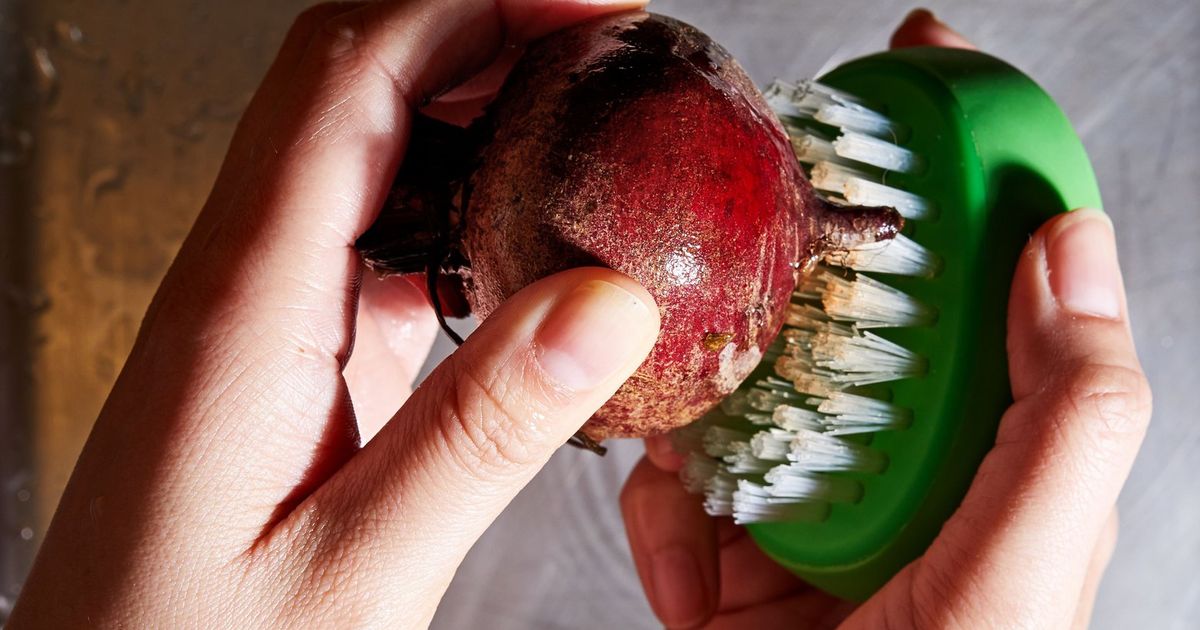Based on questions and comments I’ve gotten over the years when I have written about food safety or fruit and vegetable primers, I started researching a story about why it’s not a good idea to wash your produce with soap. Then I walked in on [REDACTED] scrubbing potatoes with a bit of dish soap.
“I am literally working on a story about this right now!” I shouted with louder self-righteousness than I meant to.
So, let’s come clean. Washing your fruit and vegetables with soap can not only be bad for them, but it can be bad for you, as well.
Inevitably, the question arises: How come I can wash my dishes and hands with soap but not my food?
“It’s a tough analogy,” says Jason Bolton, extension professor and food safety specialist at the University of Maine Cooperative Extension. The biggest difference is that your hands and dishes are not permeable surfaces you will be eating. Your fruits and vegetables are, though the permeability varies by type.
The issue: Your produce may absorb soap, or you may not end up rinsing off all the residue. According to the Agriculture Department, “Consumers should not wash fruits and vegetables with detergent, soap or commercial produce washes. These products are not approved or labeled by the U.S. Food and Drug Administration (FDA) for use on foods. You could ingest residues from soap or detergent absorbed on the produce and get sick.” Remember, you will be eating your fruit and vegetables, which matters even if you peel them, because of the permeability issue.
“Soap, in a lot of cases, has a different chemistry than the body should be ingesting,” Bolton says. Soap can cause irritation to your gastrointestinal system, leading to vomiting or diarrhea. It could even interfere with friendly microbes in your gut.
Moreover, soap doesn’t taste good! It can impart off-flavors and damage the delicate cells of fruits and vegetables.
Keep in mind that soap works not necessarily by busting germs on contact, but by lifting microbes and dirt from your skin. The Centers for Disease Control and Prevention notes that the behavioral aspect is just as important: “People tend to scrub hands more thoroughly when using soap, which further removes germs,” thanks to the friction caused by lathering and scrubbing.
With produce, you can accomplish much of the same thing with clean, cool running water and, when needed, a vegetable brush. Ben Chapman, a professor and food safety extension specialist at North Carolina State University and one of the proprietors of the food-safety themed Barfblog, says that cool running water can remove 90 to 99% of pathogens, including E. coli, salmonella, listeria, etc., we don’t want on our produce. (Hat tip to HuffPost for reporting that last year.) That’s based on “a whole body of research on produce washing” looking at a variety of fruits and vegetables and a variety of pathogens, Chapman says. “Bottom line from the literature is that rinsing produce is doing something, washing with soap is really not doing anything more, and can only increase risk as soap residue is not intended to be consumed and has led to toxicity/nausea in certain cases,” he says.
In a study, Bolton and his colleagues found that distilled water was just as effective or more effective at removing microbes and pesticides than three products more often used in commercial kitchens. They note that clean tap water is equally acceptable, though you should pay attention to temperature. Using water that’s either very hot or very cold can be problematic and actually cause the produce to absorb the microbes you’re trying to wash away, Bolton says. (Cooking also is effective at killing microbes, but you should still wash your produce first.)
Using a clean produce brush on firm produce or produce that has a thick rind (cucumbers, apples, melons, root vegetables, citrus) can further reduce the presence of dirt, microbes and pesticides. Be sure to frequently wash and sanitize the brush, such as in the dishwasher or in boiling water for 20 seconds, the University of Delaware Cooperative Extension recommends. More delicate produce can be gently scrubbed with your hand, according to the Cornell Cooperative Extension. Drying produce with a clean dish towel or paper towel is another important step to help remove contaminants.
Run herbs under running water or swish through a bowl of cool water. Lettuce and other greens can be separated into leaves (compost the outer ones) and individually rinsed or soaked in a bowl of cool water for a few minutes, after which you want to rinse them. Dry herbs or greens with towels or in a salad spinner.
You need not clean prewashed, pre-bagged packages of greens that are labeled ready-to-eat. Doing so can actually increase the risk of cross-contamination, Chapman says. For more guidance, Colorado State University Extension has a good guide on washing produce by type.
Bolton and his colleagues are working on updating their fact sheet and video about washing fruits and vegetables, but the message is simple: “Stick with water.”
Why you shouldn’t be washing your fruits and vegetables with soap – The Seattle Times



